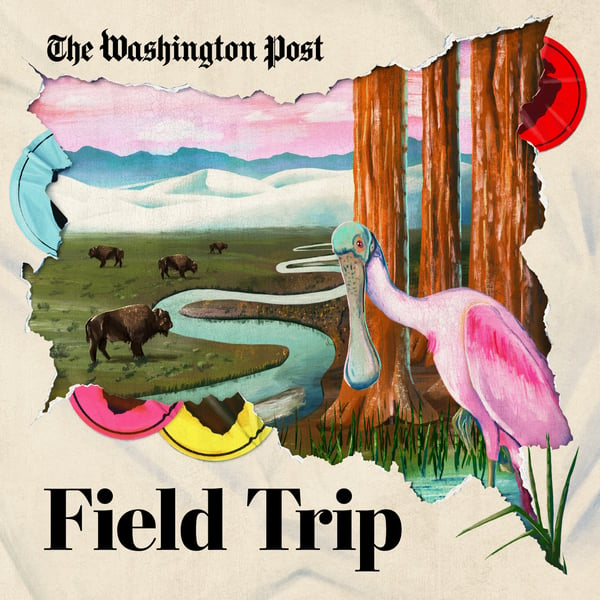Yosemite National Park
Field Trip
The Washington Post
4.6 • 976 Ratings
🗓️ 28 June 2023
⏱️ 56 minutes
🧾️ Download transcript
Summary
California’s Sierra Nevada is home to a very special kind of tree, found nowhere else on Earth: the giant sequoia. For thousands of years, these towering trees withstood the trials of the world around them, including wildfire. Low-intensity fires frequently swept through groves of sequoias, leaving their cinnamon-red bark scarred but strengthened, and opening their cones to allow new seeds to take root.
But in the era of catastrophic wildfires fueled by climate change, these ancient trees are now in jeopardy. And Yosemite National Park is on the front lines of the fight to protect them.
In the first episode of “Field Trip,” Washington Post reporter Lillian Cunningham takes listeners inside this fabled landscape — from the hush of the Mariposa Grove to the rush of the Merced River — to explore one of America’s oldest and most-visited national parks.
We’ll hear from Yosemite forest ecologist Garrett Dickman on the extreme measures he’s taken to protect iconic trees; from members of the Southern Sierra Miwuk working to restore Native fire practices to the park; and from Yosemite superintendent Cicely Muldoon about the tough choices it takes to manage a place like this.
We’ll also examine the complicated legacies that conservationist John Muir, President Abraham Lincoln and President Theodore Roosevelt left on this land.
The giant trees of Yosemite kick-started the whole idea of public land preservation in America. Join us as we visit the place where the idea of the national parks began — and ask what the next chapter might look like.
You can see incredible photos of Yosemite and find more on the national parks here.
Subscribe to The Washington Post with a special deal for podcast listeners. Your first four weeks are free when you sign up here.
Transcript
Click on a timestamp to play from that location
| 0:00.0 | When I feel stressed, I picture the time when I was 10 or 12 years old and my family took a road trip out west. |
| 0:09.0 | I remember my dad pulling over to the side of the road inside Grand Teton National Park and my little sister and I jumped out of the backseat of our rental car and we took off running through this huge field of yellow |
| 0:26.1 | and pink and purple wildflowers. |
| 0:28.8 | When people talk about that technique to like close your eyes and picture somewhere peaceful, |
| 0:38.0 | that's where my mind goes. |
| 0:40.0 | To that meadow, to those flowers, and like the blue mountains rising behind them. |
| 0:51.0 | I have loved national parks ever since. |
| 0:55.0 | I got my first pair of hiking boots in ninth grade |
| 1:00.0 | and I wore them to Acadia after I graduated college, to Shenandoah, |
| 1:04.3 | after I moved to DC, to the Grand Canyon |
| 1:07.2 | after I finished Presidential, my first podcast. |
| 1:10.8 | And now, I get to wear them on a new adventure. |
| 1:15.0 | For a while I've wanted to set out on a different kind of trip. |
| 1:22.0 | Because as beautiful as they are these parks are not |
| 1:26.2 | postcards they're living breathing places that are shaped by the forces |
| 1:31.4 | around them, |
| 1:33.2 | which means they are rapidly changing, |
| 1:36.8 | and in many cases under threat. |
| 1:42.4 | Over the next five episodes we'll visit five parks. |
| 1:47.0 | From the forests of Yosemite in California, |
| 1:57.0 | to the mountains of Glacier in Montana. |
| 2:09.0 | From the desert of white sands in New Mexico, to Florida's everglades. Oh my gosh! Oh my God! |
... |
Please login to see the full transcript.
Disclaimer: The podcast and artwork embedded on this page are from The Washington Post, and are the property of its owner and not affiliated with or endorsed by Tapesearch.
Generated transcripts are the property of The Washington Post and are distributed freely under the Fair Use doctrine. Transcripts generated by Tapesearch are not guaranteed to be accurate.
Copyright © Tapesearch 2025.

